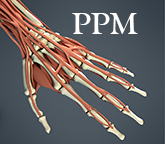Wrist and Hand Injury Prevention
January 27, 2014 | Posted in Uncategorized | By drsmespinoza
Comments Off on Wrist and Hand Injury Prevention
Assignment:
1. Finish your wrist strengthening or rehabilitation program. Make sure you are using your own words and your own routine, not copying the work of someone else.
2. Taping: There are many ways to apply athletic tape, based on the purpose of the tape job.
Watch the Texas A & M video on wrist taping and take Cornell Notes on the steps.
http://www.youtube.com/watch?v=fPjbyzBdhrs
Use your notes to practice wrist taping
3. Add notes on a thumb Hypertension tape job to your Cornell Notes:
http://www.youtube.com/watch?v=1ydvON1PmjE&list=PLdqm13d6ac3oxPLeY1NHytDw2OrY-3s_U&index=2
Practice Thumb Taping
4. Watch the following video on SAM splints and add to your notes information about what a SAM splint is sued for and how it is used.
http://www.youtube.com/watch?v=89QD3Vc_rWk
Wrist Rehabilitation Exercises
January 21, 2014 | Posted in Uncategorized | By drsmespinoza
Comments Off on Wrist Rehabilitation Exercises
Assignment:
1. Set up your paper for Cornell Style Notes.
2. Based on class discussion, answer this question in your notes:
What is the difference between a rehabilitation program and a strengthening program?
3. Add the following to your notes:
Complete a comparison frame about the similarities and differences between rehabilitation programs and strengthening programs.
4. Watch the following video and follow along to perform the exercises/ stretches.
Watch a second time and describe the stretches, remember to use Cornell Style.
http://www.youtube.com/watch?v=cWtvCGCYbYc
5. One of the activities that professionals in the Physical Medicine field perform is to create training plans to prevent injury or to assist with the rehabilitation of an injured area. Create a brochure or flyer which describes and illustrates (pictures) how to perform at least 7 exercises to prevent injury of the wrist or to strengthen it. Make sure to describe whether you are creating a prevention program or a rehabilitation program.
Read through all the resource links before picking your exercises
Your training plan should flow together and should make sense in its order.
Make sure this looks professional !
Include:
- Description of the program – what it is for/ who it is for
- How to perform the exercises (your own description)
- Pictures (You draw – Or, take your own photographs – Do not download pictures from the internet or print pictures to paste)
- Number of Repetitions
- Include any precautions / limitations
Links for Exercises:
https://sites.google.com/site/activecarephysiotherapyclinic/wrist-hand-exercises
http://www.abcbodybuilding.com/wrist_sprain_rehabilitation_exer.htm
http://www.toc.md/exercises_wristhand.htm
http://www.physioadvisor.com.au/8122850/wrist-strengthening-exercises-wrist-rehabilitati.htm
http://www.bodybuilding.com/fun/md55.htm
http://cindylaifitness.com/2012/12/strengthen-your-wrists-to-improve-overall-fitness-performance/
Bones of the Wrist and Hand
January 16, 2014 | Posted in Uncategorized | By drsmespinoza
Comments Off on Bones of the Wrist and Hand
Today we are going to look a closer at the bones of the wrist and hand and practice our palpation techniques.
1. Draw an outline of your hand and then draw in the bones and label them.
Pay special attention to the carpal bones. You can think of the carpal bones as being in 2 layers of 4 bones. although they are not evenly spaced.
You can use the following links as a reference for the shapes of the bones.
http://www.ivy-rose.co.uk/HumanBody/Skeletal/Hand-Bones.php
http://visual.merriam-webster.com/human-being/anatomy/skeleton/hand.php
2. Using the first letter of each bone, create your own mnemonic for remembering the carpal bones in order:
Here is an example
Some Looser Try Pizza That They Can’t Handle
3. Practice palpating the bones of the hands. Can you find them on yourself? Can you find them on someone else?
4. Practice labeling the bones of the wrist and hand (2 links) –
2.
Fractures

January 10, 2014 | Posted in Uncategorized | By drsmespinoza
Comments Off on Fractures
E.Q. How can you distinguish between the different types of fractures?
Assignment:
Using Cornell style notes, take notes on fractures:
Assignment
1. Write 5 comparison statements about fractures. (Your statements should be unique, not the same as other classmates)
A(n) fracture ; but a(n) fracture .
Example:
An open fracture occurs when broken bone is sticking out of the skin but a closed fracture occurs when none of the bone pieces pierce the skin .
2. Write 3 similarity statements about fractures (other than that they are fractures)
A(n) fracture is similar to a(n) fracture because they both .
3. Using the internet, look up and describe the following specific fractures
Colles Fracture
Boxer’s Fracture
Smith’s Fracture
4. What is the most commonly fractured carpal bone and what are the symptoms?
5. Study the set on Quizlet using the scatter game or the self test:
http://quizlet.com/33875219/fractures-and-sprains-flash-cards/
6. Quiz on Quia:
http://www.quia.com/quiz/4569334.html
Sprain Grading and Treatment
January 8, 2014 | Posted in Uncategorized | By drsmespinoza
Comments Off on Sprain Grading and Treatment
http://www.webmd.com/fitness-exercise/wrist-sprain
Use Cornell style notes:
E.Q.
How are wrist sprains diagnosed and treated?
What is it?
How can you get a wrist sprain?
What does it feel like?
How are they diagnosed?
*What are the three grades?
What are the treatments?
When will a patient feel better?
How can it be prevented?
